Kowloon offers halal‑certified options for every craving Muslim travellers!
Exploring Muslim Art Across the Globe: From Istanbul to London’s Tate Modern
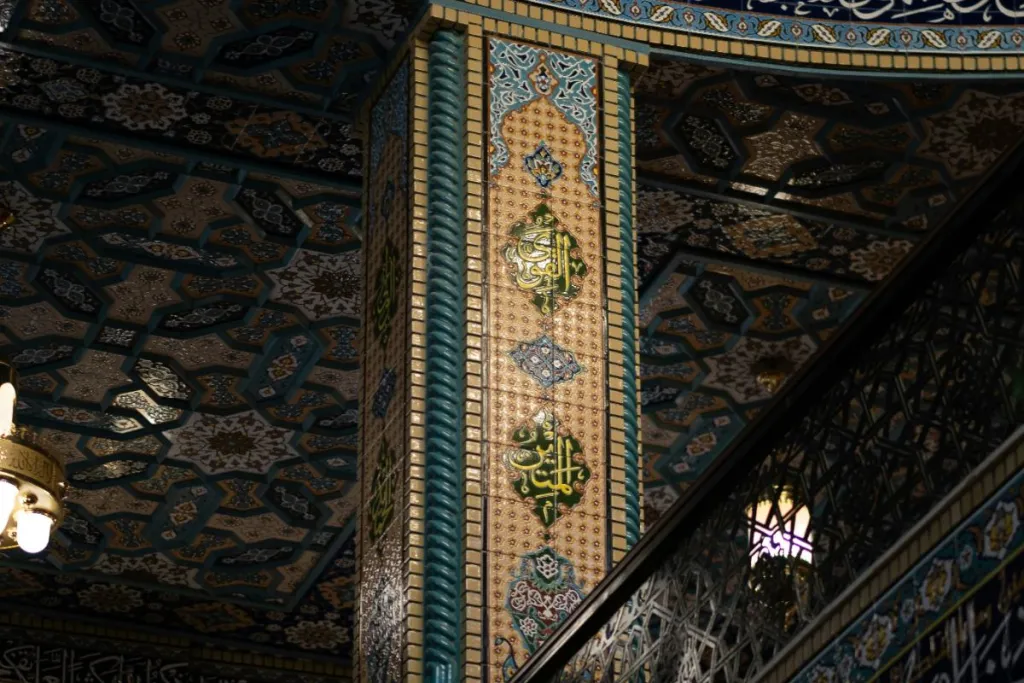
As a reflection of faith and identity, Muslim art transcends borders, marking its presence in every corner of the world. While global curiosity about Islam continues to grow, Islamic art sweeps right, reiterating history, faith, and architecture, thereby inviting audiences to discover the richness of Muslim culture. From the mosaics of Istanbul to the glass halls of London’s Tate Modern, Islamic art has shaped centuries of devotion while keeping symbolism intact.
This guide will take you across continents, from museums to art galleries, revealing the timeless beauty of Muslim art through calligraphy, architecture, and design.
Let's begin.
1. Istanbul — Home to Islamic Art
Istanbul is the beating heart of Islamic art. The legacy of the Ottoman Empire is a testament to the story of devotion and grandeur. This is evidently showcased through its monumental inscriptions, mosques, minarets, and magnificent domes that tend to leave the Muslim traveller starstruck. A few of the remarkable structures carrying the legacy are as follows:
Topkapi Palace
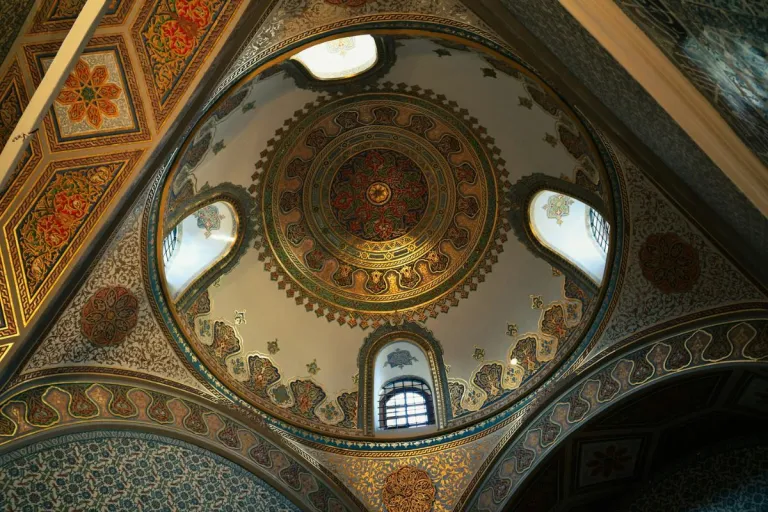
Image credit: Enes Doğan | Unsplash
The sophistication of Ottoman artisans is displayed by the palace’s intricate tilework and marble walls. The Topkapi Palace is a perfect place where Islamic art intertwines with imperial history. Furthermore, the Thuluth calligraphy, the courtyards, and the chambers reveal a fusion of Persian, Arab, and Ottoman design influences along with spiritual symbolism.
Süleymaniye Mosque
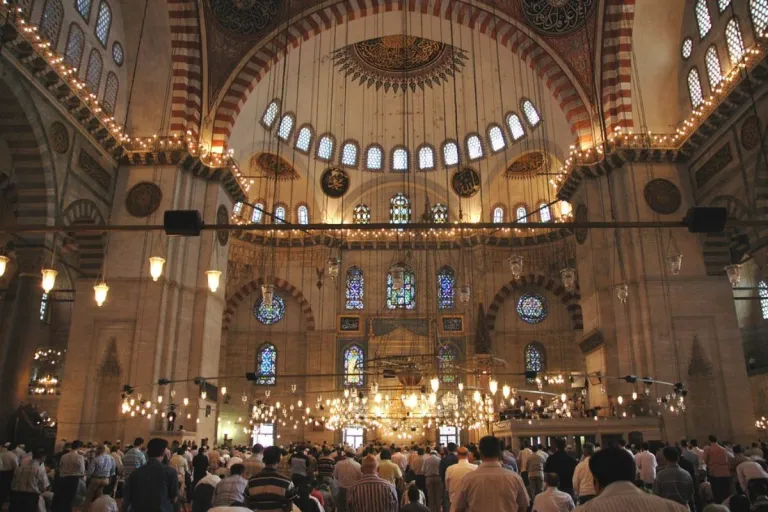
Image credit: Kalim Qureshi | Flickr
The mosque symbolises the pinnacle of Ottoman architecture, characterised by perfect proportion and harmony. Its domes, on the other hand, stand as architectural marvels that both Islamic and the iconic Byzantine design principles largely inspire. In addition, the walls are adorned with Arabic calligraphy (verses from the Quran), while the floral motifs echo the unity of faith. All in all, the mosque remains a crowning achievement of the Ottoman Empire.
Did you know? The Suleymaniye Mosque remains the resting place of both Sultan Süleyman and his wife, Hürrem Sultan.
Blue Mosque
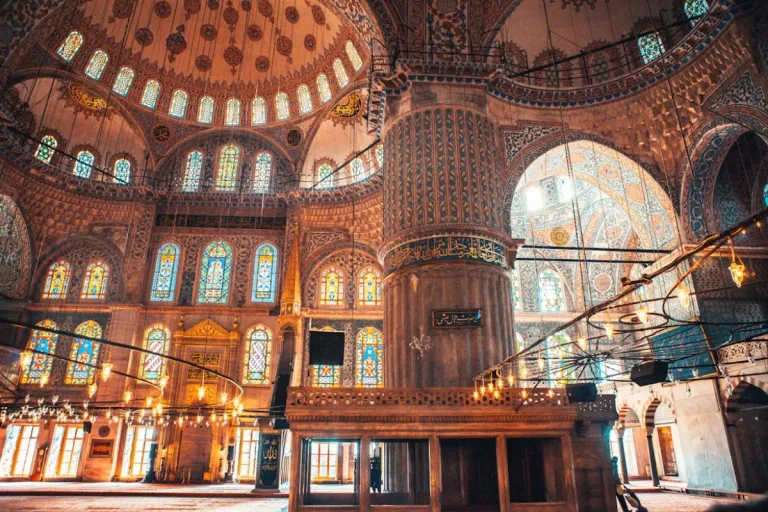
Image credit: Raimond Klavins | Unsplash
The Blue Mosque gets its name from the 20,000 hand-painted Iznik tiles that adorn its interior, creating geometric patterns that reflect the Islamic philosophy of divine unity. The architectural brilliance of the Blue Mosque, coupled with its stained windows, chandeliers, and calligraphic walls, creates a quiet reverence, allowing travellers to enter into a trance-like state upon their arrival.
Also read: How to Spend 24 Hours in Istanbul: A Local’s Guide to Exploring Like a Pro
2. The Middle East — Hub of Islamic Art
The Museum of Islamic Art, Doha — Qatar
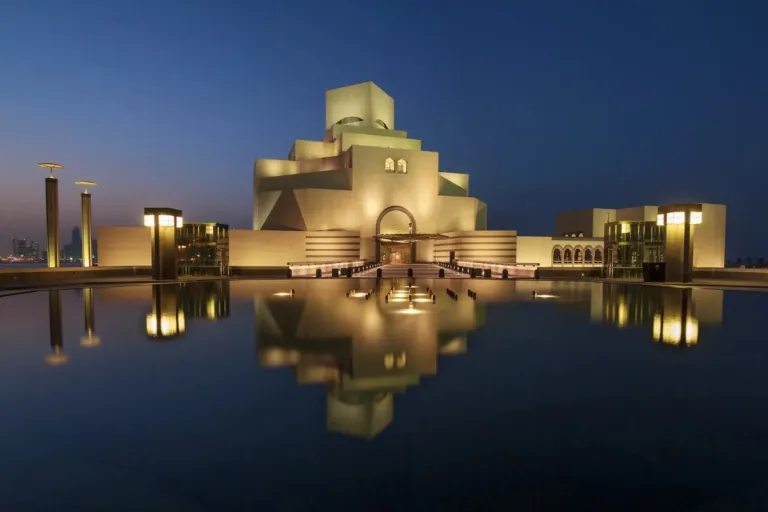
Image credit: Cundall Official Website
The Museum of Islamic Art (MIA) is a modern marvel of faith. The museum features a comprehensive collection of Islamic art spanning 1,400 years. The collections include priceless manuscripts, tilework, textiles, and glasswork, thereby narrating the tale and diversity of past Muslim civilisation.
Louvre Abu Dhabi
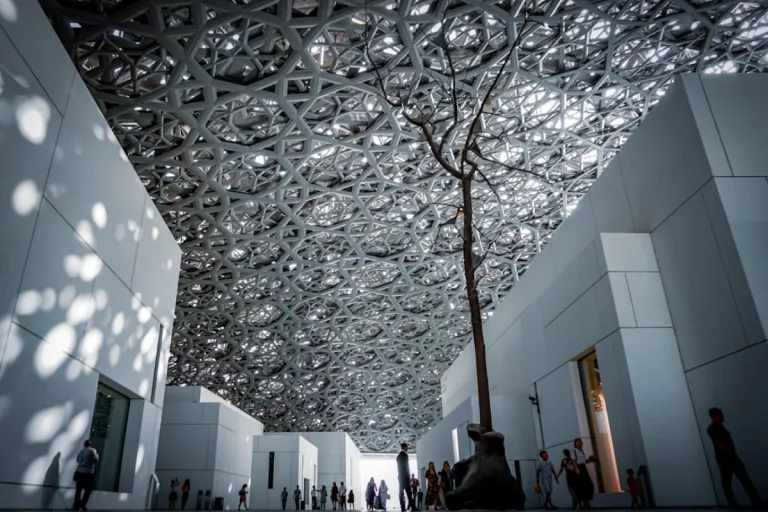
Image credit: Agnieszka Stankiewicz | Unsplash
The treasures of Mughal India, Persia, and the Arab world are displayed at the Louvre Abu Dhabi. This art scene frames a dialogue between the East and West, allowing them to learn about the aesthetics and values of the Muslim world. Furthermore, the museum acts as a bridge between cultures, fostering appreciation for Islamic artistry.
Sharjah Museum of Islamic Civilisation
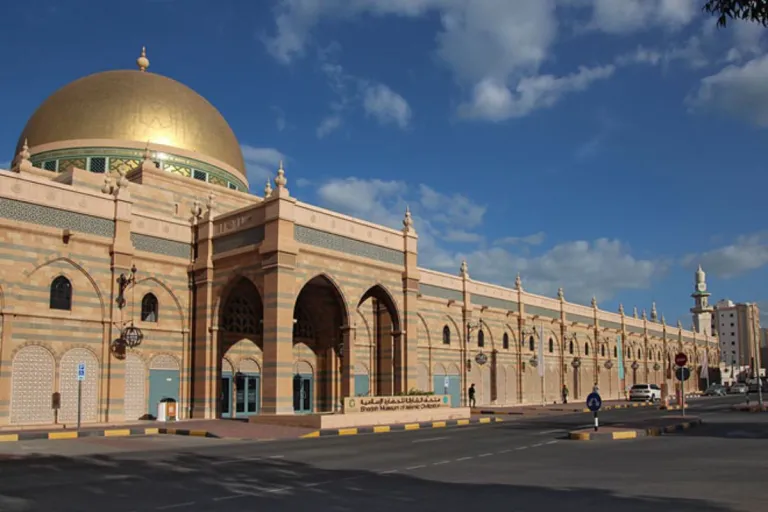
Image credit: Universe in Universe Official Website
The Sharjah Museum stands as the modern torchbearer of Islamic culture. This museum reveals and unravels Islamic art through the lens of evolution. By blending architectural elegance with scholarly depth, the museum traces its way back to Muslim civilisation from the 7th century onwards. In addition to this, each artefact — including manuscripts, astrolabes, calligraphies, and ceramics — reveals the intellectual aspect of Islamic art.
3. Europe — From Madrid to London’s Tate Modern
Trade, diplomacy, and connectivity have dispersed Islamic art around the globe, to which Europe was never an exception. The Islamic art tradition dates back centuries and remains alive today in Europe’s historic museums. Some of them are listed below:
Alhambra, Spain
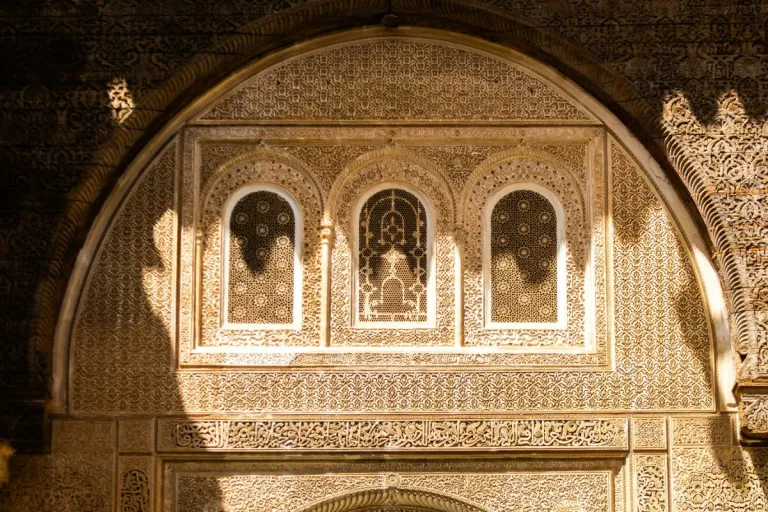
Image credit: Jimmy Woo | Unsplash
The Alhambra, through its enduring Muslim artistry, displays the heights of Andalusian creativity. It embodies how Muslim art has shaped Western architecture and how it influences global designs to this day. Moreover, the stucco-carved walls, adorned with Quranic inscriptions and arabesques, whisper a story of Muslim craftsmanship. It’s fair to conclude that, for any Muslim traveller, Alhambra — with its courtyards, halls, and muqarnas ceilings — serves as a pilgrimage site for those who seek to delve into the heart of Islamic art.
Traveller’s Tip: Since slots are limited and demand is high, it’s best to book your tickets in advance.
Museo Nacional de Arte Decorativo, Madrid
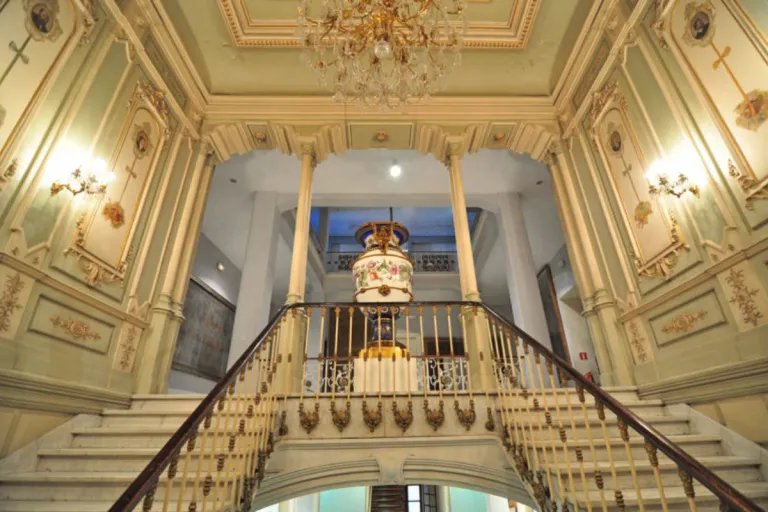
Image credit: AEPUMA Official Website
Originally established in 1912, this quiet yet profound museum showcases the way Islamic art has shaped the Spanish and European aesthetics of design. Standing as one of the most important cultural repositories, the gallery gleams and preserves Andalusia’s Islamic legacy. Moreover, the evolution of design featured in the gallery is often hard for visitors to dismiss all hail to the gallery’s Mudejar ceramics, glassware, and extraordinary metalwork.
4. Tate Modern, London
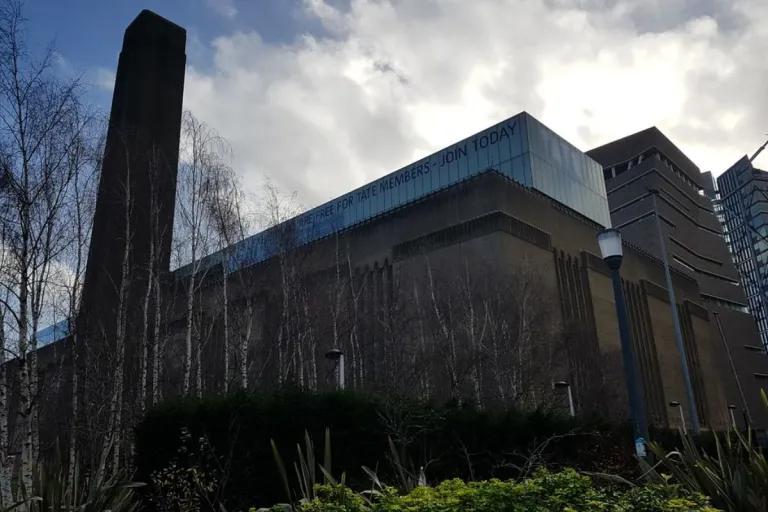
Image credit: Scott Manton | Flickr
While Istanbul and Granada remain the beating heart of classic Islamic art, London’s Tate Modern preserves history in the sense that it allows a dialogue between Muslim art and modern thought. The Tate Modern features the artwork of renowned artists from Persia and Morocco, such as Shirin Neshat and Lalla Essaydi — both of whom, through their art, challenge traditional forms. Furthermore, the curatorial approach of the museum provides leverage for Islamic art, encouraging Muslim creativity and craftsmanship to be shaped largely by global narratives. The crux of Tate Modern’s displays is to express how Islamic art is not just about preservation but rather about progression.
My Two Cents
Whether it’s the mosaics of Istanbul’s mosques or the minimalist installations of Tate Modern, Muslim art whispers a tale deeply anchored in faith and philosophy. Its existence and evolution remind us that creativity knows no borders.
So, whether you’re a globetrotter or a history enthusiast, Islamic art invites you to discover a world embedded in faith and harmony — the kind you won’t find anywhere else.
Published at
About Author
Azmi Anees
Subscribe our Newsletter
Get our weekly tips and travel news!
Recommended Articles
15 Best Halal Foods in Kowloon, Hong Kong 10 Best Halal-Friendly Destinations in The Philippines for Muslim Travellers Not just Boracay...
10 Best Places for Muslim Travellers to See Tulip Festivals in 2025 Fun Fact: Tulips didn’t actually come from the Netherlands but Türkiye!
10 Halal Anime Food Guide for Muslim Travellers in Japan Muslim-friendly versions of popular anime dishes across Japan!
Top 10 Popular Muslim-Friendly Destinations to Visit in 2025 Our schedules are packed, buddies!
Latest Articles
US Could Require Travellers to Share Five Years of Social Media History to Enter It will only apply to travellers who use ESTA under the Visa Waiver Program!
11 Popular Halal Culinary Gems in Denpasar, Bali You Absolutely Need to Try Your essential guide to the most delicious Halal culinary gems in Denpasar.
Thailand-Cambodia Conflict 2025: Muslim-Friendly Travel Precautions & Tips At least 438,000 civilians evacuated!
AirAsia Introduces Hijab Option for Muslim Cabin Crews Alhamdulillah, all female Muslim crew will officially have the choice to wear the hijab on any AirAsia flight
Your Ultimate Guide How to Get Your Self-Guided Umrah Visa & Pilgrimage Access Get Started with Your Umrah Planning!

